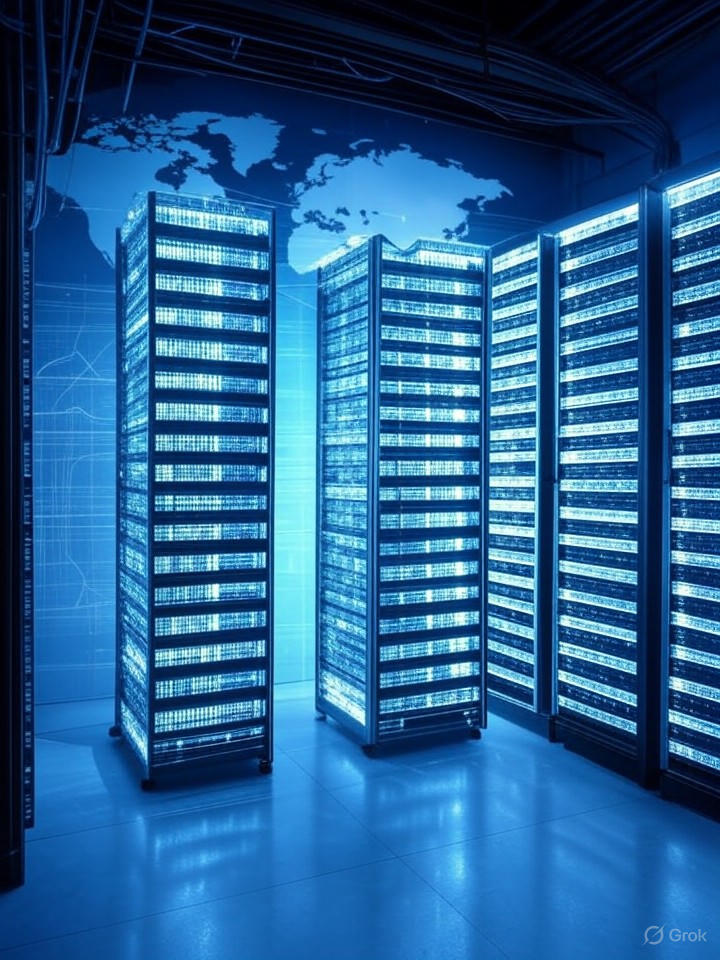The rapid boom in artificial intelligence (AI) is driving an unprecedented global demand for new data centers. This surge, while promising for innovation and digital transformation, is putting immense pressure on the world’s infrastructure, energy supply, and construction capabilities. As AI models grow larger and more complex, the industry faces escalating costs and logistical challenges that could reshape how technology companies think about expansion and sustainability.
The AI Data Center Boom Explained
Over the past few years, tech giants and cloud providers have raced to expand their data center capacity to handle the computational intensity of artificial intelligence. AI applications—from generative AI systems to advanced analytics—require vast amounts of processing power and storage. This necessity has created a surge in global development projects, each aiming to deliver faster, more efficient, and more sustainable data center solutions.
Countries like the United States, Ireland, Singapore, and the Netherlands have become key data center hubs. However, as demand continues to skyrocket, construction bottlenecks, permitting delays, and utility shortages are now common obstacles. This trend underscores a crucial question: can global infrastructure keep up with AI’s explosive growth?
Turner & Townsend’s Data Center Construction Cost Index Insights
Data from Turner & Townsend’s 2025–2026 Data Center Construction Cost Index highlights significant increases in both material and labor expenses. As more companies embark on large-scale AI infrastructure projects, competition for skilled workers and critical components, such as power distribution units and cooling systems, has intensified. The report signals higher costs across almost every major data center market globally.
For instance, North America and Western Europe are seeing cost escalations tied to local labor shortages and rising energy prices, while in regions like Asia-Pacific, land scarcity and regulatory complexities are becoming critical limiting factors. This has forced businesses to rethink location strategies and adopt more flexible construction models like modular data centers or build-to-scale designs to stay competitive.
The Infrastructure Strain: Power and Sustainability Challenges
AI’s processing needs have made power supply one of the most significant constraints in data center development. Data centers are already responsible for an estimated 1–2% of global electricity consumption, and with AI workloads multiplying, this percentage is expected to rise dramatically by the end of the decade.
In energy-constrained regions, new projects are being delayed or shifted to more power-abundant areas. Grid operators are also reporting increased pressure to expand capacity, prompting utilities to collaborate with tech companies on long-term sustainable energy strategies.
Energy Efficiency and Renewable Integration
To manage the growing carbon footprint, companies are deploying advanced cooling technologies, such as liquid immersion and AI-driven thermal management systems. Additionally, there’s a stronger push toward renewable energy. Tech firms like Google, Amazon, and Microsoft have pledged to power their data centers entirely with renewable sources within the next decade. However, achieving these sustainability goals requires substantial coordination with green energy providers and supportive policies from local governments.
Global Disparities in Data Center Development
While established markets continue to dominate, emerging economies are increasingly entering the data center race. Countries in the Middle East, Africa, and Latin America are attracting new investments thanks to strategic geography, lower real estate costs, and growing digital economies. Yet, infrastructure gaps—especially in terms of power stability and fiber optic connectivity—remain significant challenges.
For example, in regions like Southeast Asia, governments are actively incentivizing data center investment through tax benefits and public-private partnerships. Similarly, in the Middle East, cities like Dubai and Riyadh are preparing to become AI-ready hubs with innovative data infrastructure projects supported by sovereign funds.
The Role of AI in Data Center Operations
Interestingly, AI itself is now being used to optimize data center operations. Intelligent monitoring systems can predict hardware failures, balance workloads, and reduce energy consumption automatically. This self-optimizing approach not only lowers costs but also improves reliability, allowing existing infrastructure to support more intensive AI applications without necessarily expanding physical space.
As companies align sustainability with profitability, automation and AI-driven analytics will likely become central to both construction and operation phases of future facilities.
Preparing for the Next Phase of AI Infrastructure Growth
To balance rapid expansion with long-term sustainability, organizations must adopt strategic planning and partnerships. Collaboration between tech firms, construction companies, and governments is essential to overcome regulatory barriers and secure critical resources like electricity and water. In parallel, investment in workforce training is crucial to meet the demand for skilled labor across engineering, project management, and data science roles.
Another emerging trend is the decentralization of data center networks. By distributing smaller, edge computing facilities closer to users, companies can reduce latency and dependence on large central hubs. This could alleviate some power and land constraints seen in traditional data center corridors.
Key Takeaways for Businesses and Policymakers
- Strategic Siting: Selecting regions with stable energy supply and supportive policy frameworks is now essential to mitigate project risks.
- Investment in Sustainability: Long-term profitability will depend on adopting renewable energy sources and efficient cooling technologies.
- Supply Chain Adaptation: With competition for materials and labor increasing, partnerships and innovation in construction methods will be vital.
- Government Collaboration: Policymakers must balance data infrastructure expansion with environmental targets and grid stability.
Conclusion: Balancing Growth, Cost, and Sustainability
The global rush to build AI data centers marks a pivotal moment in the evolution of digital infrastructure. While the opportunities for innovation and economic growth are unprecedented, the accompanying pressures on energy systems, supply chains, and the environment cannot be ignored. Turner & Townsend’s 2025–2026 Data Center Construction Cost Index serves as a crucial reminder that strategic foresight, sustainability, and technological innovation must go hand in hand.
As governments and industries navigate this complex transformation, the challenge lies in ensuring that the foundation supporting artificial intelligence remains stable, sustainable, and ready for the data-driven future ahead.

